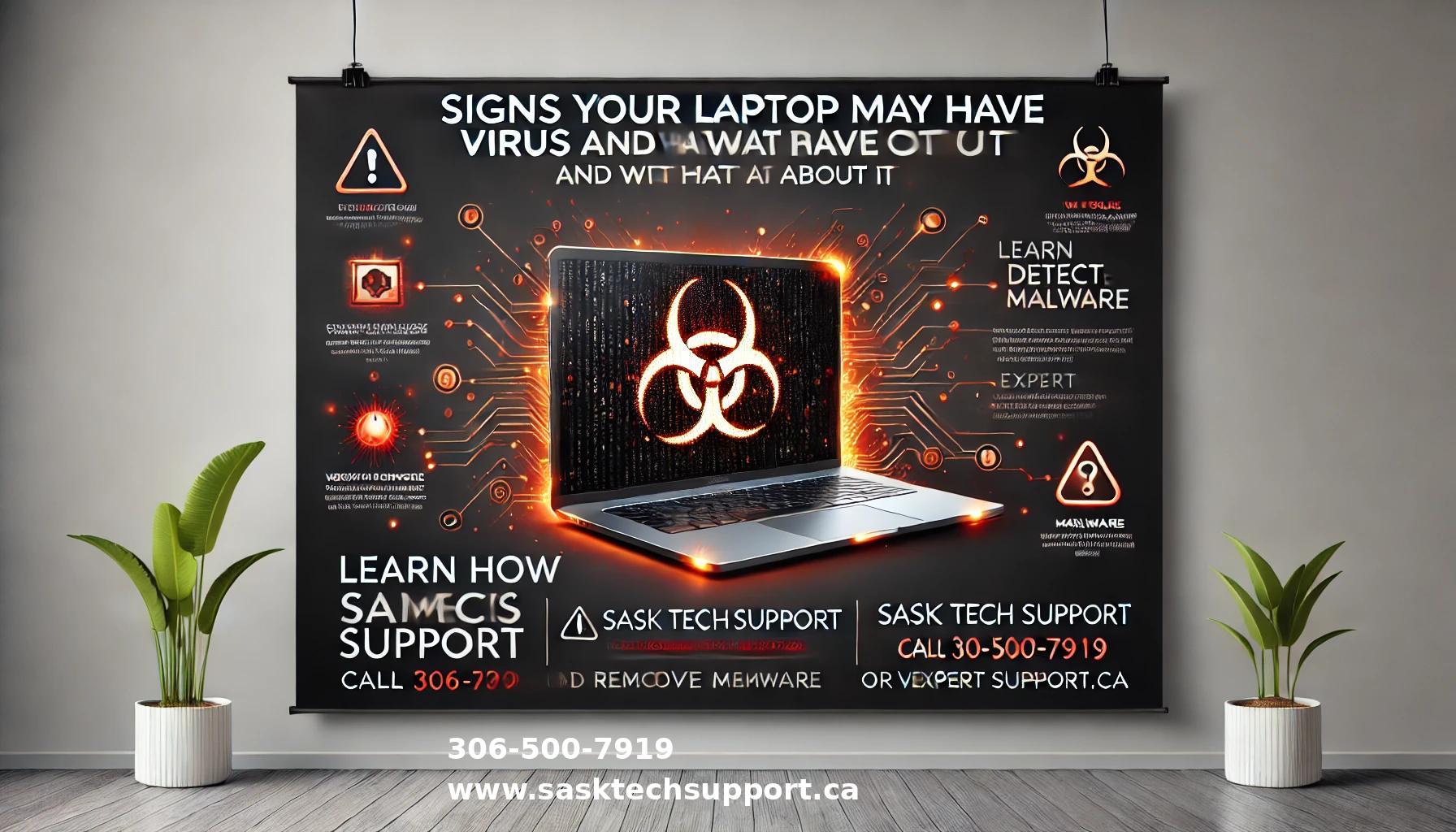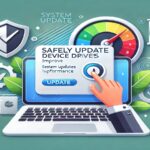In today’s digital age, your laptop is not just a tool but a gateway to your professional and personal life. A virus on your device can disrupt productivity, compromise sensitive information, and lead to irreversible damage. Understanding the signs of a virus and knowing how to address them can save you from potential disasters. Below, we’ll explore the telltale symptoms of an infected laptop and provide actionable steps to fix and prevent future attacks.
Common Signs That Your Laptop Has a Virus
1. Sudden Sluggish Performance
One of the first indications of a potential virus is a noticeable decline in your laptop’s speed. If applications take longer to open, files load slowly, or your system frequently freezes, it might be due to malicious software running in the background.
2. Frequent Pop-Up Ads
Unexpected pop-up ads appearing on your screen are a clear red flag. These ads are often part of adware, a type of malware designed to display intrusive advertisements. Clicking on them can lead to further infections.
3. Unexplained Storage Issues
A virus can consume significant disk space, causing your laptop to show warnings about running low on storage. If you haven’t downloaded any large files recently but still face this issue, malware could be the culprit.
4. New or Missing Files
Malware often manipulates files on your laptop. You might notice unknown files appearing on your desktop or folders disappearing altogether. This activity indicates unauthorized access to your system.
5. Overheating
Viruses can overwork your CPU and GPU, causing your laptop to overheat. This excessive strain on hardware is a common symptom of cryptojacking malware, which uses your device to mine cryptocurrency without your consent.
6. Changes in Browser Behavior
If your browser’s homepage has changed, or you’re being redirected to unknown websites, it’s likely that your system has been infected with a browser hijacker.
7. Disabled Security Features
Viruses often disable antivirus software or firewalls, leaving your laptop vulnerable to additional attacks. If you notice that your security tools are turned off without your action, it’s time to investigate.
8. High Data Usage
Unusual spikes in your internet data usage can indicate a virus sending information from your laptop to an external server. This is particularly common with spyware.
9. Persistent Crashes or Blue Screen of Death (BSOD)
Frequent system crashes or the infamous BSOD could point to a deep-rooted malware infection affecting critical system files.
What to Do If Your Laptop Has a Virus
Step 1: Disconnect from the Internet
The first step in containing a virus is to disconnect your laptop from the internet. This prevents the malware from spreading to other devices or transmitting sensitive information.
Step 2: Boot into Safe Mode
Restart your laptop in Safe Mode to prevent malicious programs from running. Safe Mode limits system functions, allowing you to identify and remove viruses more effectively.
- For Windows: Restart and press F8 during boot-up, then select Safe Mode.
- For Mac: Restart and hold the Shift key.
Step 3: Run a Full System Scan
Use a trusted antivirus program to scan your entire system. Ensure the software is up to date to detect and remove the latest threats. Recommended antivirus tools include:
- Norton 360
- McAfee Total Protection
- Malwarebytes
Step 4: Remove Suspicious Programs
Access your list of installed programs and uninstall any that you don’t recognize or didn’t intentionally download. Be cautious and research unfamiliar software before removing it.
Step 5: Clear Browser Data
Eliminate traces of malware in your browser by clearing its cache, cookies, and history. Additionally, remove any unknown extensions or toolbars that may have been installed without your consent.
Step 6: Update Your Operating System
Keeping your OS updated is critical for patching vulnerabilities that viruses exploit. Check for updates regularly and install them immediately.
Step 7: Restore System to a Previous State
If the virus persists, consider using your laptop’s system restore feature to revert to a point before the infection occurred. Note that this step will not recover files lost to malware.
Step 8: Seek Professional Help
If you’re unable to remove the virus yourself, consult a professional technician or a remote tech support service to ensure your laptop is thoroughly cleaned.
How to Prevent Future Virus Infections
1. Install Reliable Antivirus Software
Invest in a robust antivirus program and enable real-time protection. These tools can identify and block malware before it infiltrates your system.
2. Enable Firewalls
A firewall acts as a barrier between your laptop and potential threats from the internet. Make sure it’s always active.
3. Be Cautious with Email Attachments
Avoid opening email attachments or clicking on links from unknown senders. Phishing emails are a common method for spreading viruses.
4. Regularly Update Software
Keep all software, including your operating system and applications, updated. This ensures that vulnerabilities are patched promptly.
5. Avoid Unsecured Websites
Stick to websites that use HTTPS encryption. Unsecured websites are more likely to host malicious content.
6. Use Strong Passwords
Create unique and complex passwords for your accounts. Use a password manager if needed to keep track of them securely.
7. Enable Automatic Backups
Regularly back up your data using cloud storage or an external hard drive. In the event of a malware attack, you can restore your files without loss.
8. Educate Yourself on Cybersecurity
Understanding the tactics hackers use can help you recognize threats early. Stay informed about the latest cybersecurity trends.
Conclusion
Recognizing the signs of a virus and taking swift action is essential for protecting your laptop and sensitive data. By following the steps outlined above, you can effectively eliminate malware and fortify your system against future attacks. Cybersecurity is an ongoing process, and staying vigilant is your best defense.
















